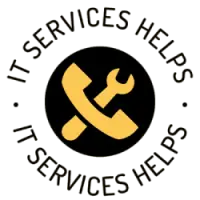How do I troubleshoot IT service Issues?
When troubleshooting IT services issues, there are several steps you can follow to help identify and resolve the problem. Here’s a general guide to help you troubleshoot IT service issues effectively:
- Identify the problem: Start by gathering as much information as possible about the issue. Talk to the user experiencing the problem and ask specific questions to understand the symptoms, error messages, and any recent changes or events that might be related. This initial step will help you narrow down the scope of the problem.
- Check connectivity: Verify that the affected device or service has a stable network connection. Ensure that cables are securely connected, Wi-Fi is functioning properly, and there are no known network outages or disruptions. Test connectivity by trying to access other resources or websites.
- Verify access permissions: If the issue involves accessing a particular resource or service, check the user’s access permissions. Ensure that the user has the necessary privileges and rights to use the service or access the resource. Review the user’s account settings and compare them to those of working users, if applicable.
You can also visit for IT services:- IT support services
- Restart affected systems: Sometimes, a simple system restart can resolve temporary glitches or conflicts. Encourage the user to restart their device and any related equipment, such as routers, modems, or servers. Restarting can clear temporary files, refresh settings, and resolve minor software or hardware issues.
- Check for software updates: Outdated software can lead to compatibility issues and vulnerabilities. Ensure that the affected device’s operating system, applications, and drivers are up to date. Install any pending updates and patches to rule out known issues that might have been addressed in the latest versions.
- Review event logs and error messages: Examine the event logs on the affected device or related servers for any error messages or warnings. These logs often provide valuable information about the cause of the problem. Search for specific error codes or keywords online to find potential solutions or relevant troubleshooting steps.
- Test in a controlled environment: If possible, recreate the issue in a controlled environment. This step helps determine whether the problem is specific to the user’s device or if it’s a broader system-wide issue. Isolating the problem can guide you toward the appropriate solution or escalation path.
- Consult knowledge bases and online resources: Utilize knowledge bases, forums, vendor documentation, and online resources to find solutions to common problems or errors. Many software and hardware vendors maintain comprehensive support articles and forums where users and experts share troubleshooting tips and solutions.
- Reach out for assistance: If you’re unable to resolve the issue using the above steps, consult with colleagues, superiors, or IT support teams within your organization. Provide them with detailed information about the problem and the steps you’ve already taken. Collaboration can often lead to fresh perspectives and additional troubleshooting options.
- Document and escalate: Throughout the troubleshooting process, document the steps you’ve taken, including any changes made or actions performed. If you’re unable to resolve the issue, escalate it to the appropriate support team or vendor, providing them with a detailed description of the problem, your troubleshooting efforts, and any relevant logs or error messages.
Remember, troubleshooting IT services issues often requires patience and a systematic approach. By following these steps, you can efficiently identify and resolve a wide range of IT problems.

